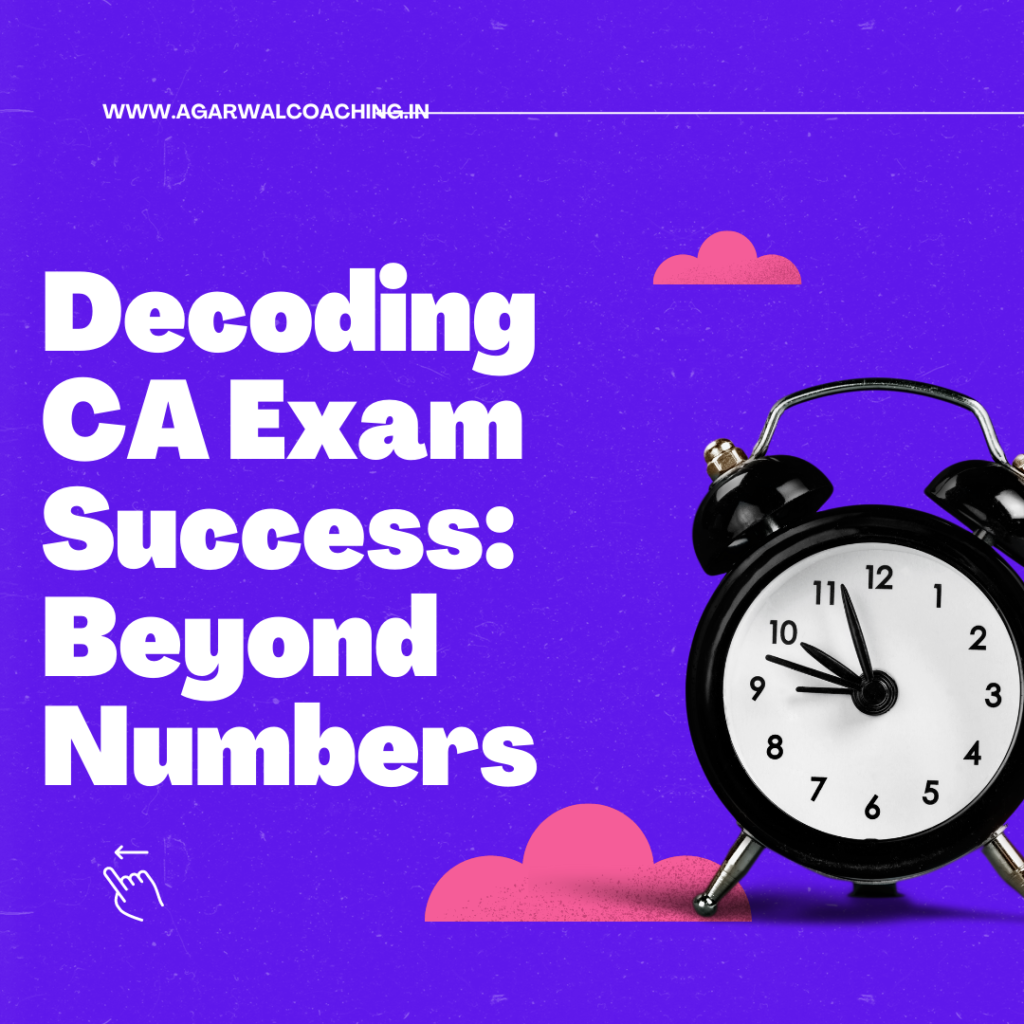
Introduction
The Chartered Accountancy (CA) exams are renowned for their rigor and comprehensive assessment of candidates’ knowledge, skills, and ethical standards. Aspiring Chartered Accountants undertake these exams with dedication and perseverance, with the ultimate goal of becoming qualified finance professionals. In this blog, we will delve into the passing rate for CA exams, exploring the factors influencing pass rates, and understanding the significance of this metric in the journey towards becoming a CA.
1. Grasping the CA Exam Passing Rate
The passing rate for CA exams refers to the percentage of candidates who successfully clear a particular level of the exam in a specific attempt. It is a statistical representation of the number of candidates who have met the qualifying criteria for that examination cycle.
2. CA Exam Levels and Passing Rates
The passing rates for CA exams can vary based on the level of the exam. The CA course consists of three levels: CA Foundation, CA Intermediate, and CA Final. The passing rates for each level can differ due to factors such as the complexity of the syllabus, the nature of the exam questions, and the overall difficulty level.
I. Minimum Marks: Candidates must obtain a minimum of 40% marks in each subject to pass that particular subject.
II. Aggregate Marks: To clear the Intermediate level, candidates need an aggregate of 50% marks in the total of all papers combined.
3. Factors Influencing Passing Rates
Several factors can impact the passing rate for CA exams:
I. Complexity of the Syllabus: The level of difficulty of the syllabus can influence candidates’ preparedness and impact the passing rate.
II. Exam Format and Pattern: Changes in the exam format, such as introduction of objective-type questions or amendments to the pattern, may affect candidates’ performance.
III. Study Materials and Preparation: The quality and availability of study materials, coaching, and preparation resources can influence candidates’ performance in the exams.
IV. Level of Difficulty: The overall difficulty level of the exams in a particular attempt can impact the passing rate.
4. Historical Trends
Historically, the passing rates for CA exams have varied across different exam cycles. In some cycles, the passing rate may be higher, indicating that a larger number of candidates have met the qualifying criteria. Conversely, in other cycles, the passing rate may be lower, reflecting the challenges faced by candidates in meeting the required standard.
5. The Significance of the Passing Rate
While the passing rate is an important metric, it is essential to remember that individual preparation and performance are key determinants of success. Candidates must focus on their own preparation, perseverance, and dedication, rather than solely relying on the passing rate as a measure of their own chances of success.
6. Overcoming Challenges
Clearing the CA exams requires commitment, hard work, and resilience. Candidates should stay focused, seek guidance, and embrace a positive mindset, irrespective of the passing rate. Each attempt is an opportunity to learn and grow, and with determination, they can achieve their goal of becoming a qualified Chartered Accountant.
Conclusion
The passing rate for CA exams provides a statistical insight into the performance of candidates in a particular exam cycle. While it can offer some indication of the overall difficulty level, it should not be the sole factor influencing candidates’ determination and efforts. Preparing for the CA exams requires dedication, consistency, and thorough understanding of the syllabus. Aspiring Chartered Accountants should focus on their individual preparation, seeking guidance from mentors and professionals, and adopting a growth mindset. The journey to becoming a qualified Chartered Accountant is not solely defined by the passing rate but by the commitment, perseverance, and passion demonstrated throughout the process. With dedication and hard work, aspiring CAs can conquer the challenges of the CA exams and emerge as competent and respected professionals in the dynamic world of finance and accounting.







